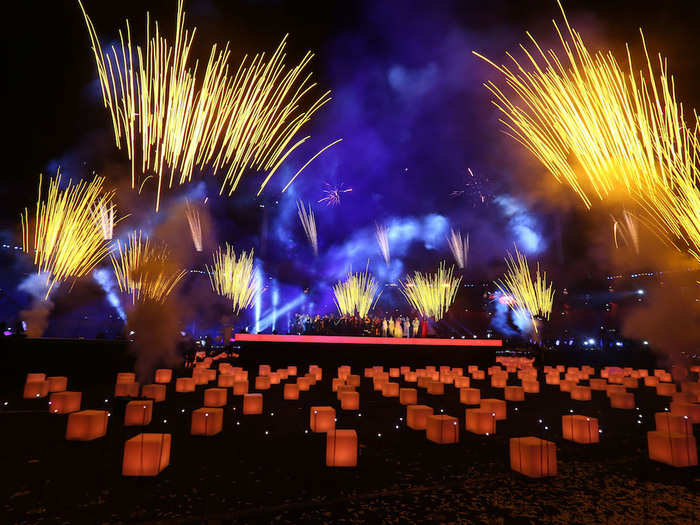
You may think sodium belongs in your salt shaker. But burning-hot sodium produces a bright yellow explosion that's perfect for lighting up the sky.

Strontium was used in the glass screens of a lot of old color TV sets, because it helped block x-rays from hitting us. The element has a yellowish color, but it burns red hot.

Most green fireworks are made from barium nitrate, which is toxic to inhale, so it's not used for much else, though it can be an ingredient in grenades.

"Blue is still kind of the unicorn of fireworks manufacturing," Tockstein said. The temperature of the flame has to be very precise, otherwise you lose the coloring.
"There's kind of a physics and chemistry limitation that prevents you from getting a good blue," he said.

These chemical elements have some of the highest burn temperatures. By adding them in to other color creations, you can create lighter hues.




Some of the fancier ghosting displays can make colors look like they're dancing and moving.
"It's more of the artistic side of pyro," Tockstein said.

Tockstein said that's one of the main reasons to enjoy fireworks shows at a distance.
"A shell itself is basically a sphere of cardboard," he said.
Once the shell breaks, it falls to the ground as charred remains. It's perhaps the least exciting part of the show, but for the people setting everything up, it's a sign the end of a long workday is near.
 Saudi Arabia wants China to help fund its struggling $500 billion Neom megaproject. Investors may not be too excited.
Saudi Arabia wants China to help fund its struggling $500 billion Neom megaproject. Investors may not be too excited. I spent $2,000 for 7 nights in a 179-square-foot room on one of the world's largest cruise ships. Take a look inside my cabin.
I spent $2,000 for 7 nights in a 179-square-foot room on one of the world's largest cruise ships. Take a look inside my cabin. One of the world's only 5-star airlines seems to be considering asking business-class passengers to bring their own cutlery
One of the world's only 5-star airlines seems to be considering asking business-class passengers to bring their own cutlery Experts warn of rising temperatures in Bengaluru as Phase 2 of Lok Sabha elections draws near
Experts warn of rising temperatures in Bengaluru as Phase 2 of Lok Sabha elections draws near
 Axis Bank posts net profit of ₹7,129 cr in March quarter
Axis Bank posts net profit of ₹7,129 cr in March quarter
 7 Best tourist places to visit in Rishikesh in 2024
7 Best tourist places to visit in Rishikesh in 2024

Copyright © 2024. Times Internet Limited. All rights reserved.For reprint rights. Times Syndication Service.